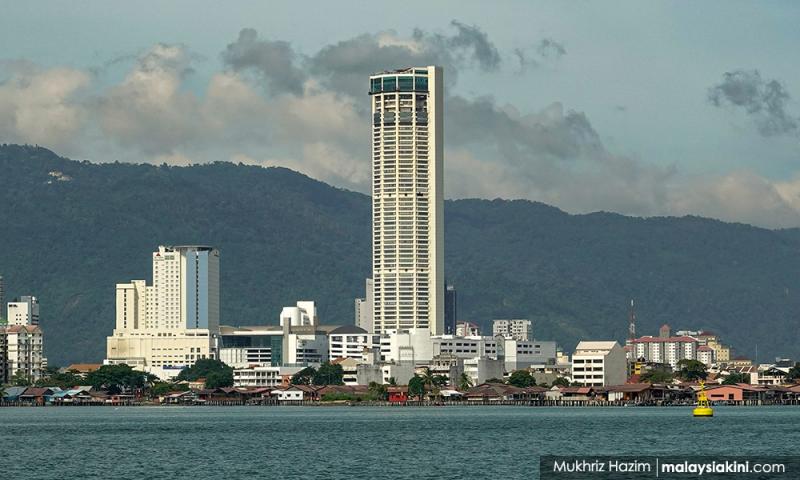LETTER | The cessation of Penang: Was Kedah a sovereign state?
LETTER | The cessation of Penang: Was Kedah a sovereign state? (malaysiakini.com)

LETTER | Kedah is the oldest surviving kingdom established in the year 630AD still existing today.
Unwilling to go through the same fate as the Pattani Sultanate that was ravaged and dismantled by Siam in 1785, Kedah began to seek diplomatic assistance from other powers within the region.
At the same time, Francis Light, an agent of the English East India Company (EIC), was looking for a trading post for the British Empire along the Strait of Malacca.
He approached Sultan Abdullah Mukarram Shah in 1786 and brokered a deal on behalf of the EIC among others, allowing Light to settle on Penang, which was later renamed Prince of Wales Island. This was made possible in return for military protection provided by the EIC to Kedah.
This deal was, however, never honoured as the EIC refused to protect Kedah from subsequent attacks by the Siamese.
Angered by the situation, the sultan attempted to retake Penang in 1790 but before the Kedahans were able to do so, Light launched a surprise attack on Prai and this forced the sultan to retreat.
In helpless condition, the ruler at that time, Sultan Dhiauddin Mukarram Shah II had to reluctantly lease Penang, and subsequently, Prai too, which was renamed “Province Wellesley” in 1800 with a nominal annual payment of 10,000 Spanish dollars.
This was done via a treaty with George Leith, the then Lieutenant-Governor of Penang, abrogating the earlier arrangements entered into between Light and Sultan Abdullah Mukarram Shah in 1786.
International law dictates that for a political entity to be recognised as a sovereign state, it has to fulfil four requirements, namely having its own territory, population, a working government and ability to enter into relationships with other sovereigns.
Article 6 of the Vienna Convention on the Law of Treaties 1969 (which is a codification of customary international law and state practises concerning treaties) stipulated that only states could enter into a treaty.
In this particular situation, it was the British who approached the sultan, and not the king of Siam, in entering a treaty for the cession of Penang, indicating British recognition that the Sultanate of Kedah was in fact a sovereign.
Therefore, Kedah fulfils the four requirements of statehood as, at that time, it possessed its own territory (including the island of Penang), it had a population, a working government and had relationships with other sovereigns.
Some historians have also contended that Kedah was a sovereign and was not a vassal state of Siam and the sending of the bunga mas indicated diplomatic relationships between the two nations.
If the island of Penang really was part of Siam, the king of Siam should have taken up responsibility in demanding the return of the island back from the British to Siamese authorities.
There were two arrangements made between the British and Kedah – one in 1786 and the other treaty was entered into in 1800 – none of which was strongly opposed by Siam.
Siam’s silence on these arrangements was a clear indication that it has acquiesced to the sovereign acts of Britain and that of Kedah with regards to the cession of the island of Penang.
It is important under international law to be a persistent objector should a sovereign disagree with any acts undertaken by other sovereigns. In fact, it was Kedah that planned an attack against British troops to retake Penang in 1790, not the Siamese.
It was not only in 1821 that Siam was successful in colonising Kedah but this endeavour was strongly opposed by the Malays.
Sherard Osborn, a British officer who witnessed Siamese attacks on Kedah narrated that “we Englishmen should be the first to honour a race (the Malays of Kedah) who will not basely submit to abuse or tyranny”.
Subsequently, Siam returned the throne back to the sultan of Kedah in 1842 and it remained a Malay Sultanate until the brief Japanese occupation and later its integration into the Federation of Malaya in 1948.
Unlike the disbanded Sultanate of Pattani, Kedah is part of Malaysia with its sultanate institution intact.
Based on the recent news report published in Free Malaysia Today, a spokesperson of the Penang Heritage Trust contended that it was Siam that lost Penang to the British and not that of the Sultanate of Kedah.
This irresponsible statement not only caused confusion to many but insulted the sultanate institution of Kedah that went back hundreds of years since its establishment.
This blatant misunderstanding of the nation’s past must be corrected.
The fact remains that Penang was part of the sovereign state of Kedah when it was ceded to the British in 1786 and 1800. Penang was never part of the Kingdom of Siam.
MOHD HAZMI MOHD RUSLI is a senior research fellow at the Asian Institute of International Affairs and Diplomacy, Universiti Utara Malaysia.
The views expressed here are those of the author/contributor and do not necessarily represent the views of Malaysiakini.
